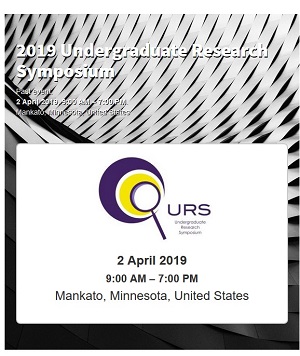Mapping Informal Settlements of Syrian Refugees in Aarsal, Lebanon
Location
CSU Ballroom
Start Date
2-4-2019 2:00 PM
End Date
2-4-2019 3:30 PM
Student's Major
Geography
Student's College
Social and Behavioral Sciences
Mentor's Name
Rama Mohapatra
Mentor's Department
Geography
Mentor's College
Social and Behavioral Sciences
Description
Population and Housing Change in Aarsal, Lebanon due to Forced Migration of Syrian Refugees between 2011-2018
Forced migration has been an issue since the beginning of civilization and even today it is a big challenge for the world. In general terms, it refers to the internal displacement of people and movement of refugees. One of the main push factors of forced migration is armed conflict and a living example is the Syrian civil war that started in 2011. This war resulted in more than 6 million internally displaced persons (IDP) and approximately 5.5 million refugees. Many fled to neighboring countries such as Turkey, Jordan, and Lebanon. Lebanon is the second largest Syrian refugee hosting neighboring country with more than 1.5 million of them. This influx contributed to a significant increase in Lebanon's population density by nearly 37 percent from 400 to 520 persons per square kilometer. One of the Lebanon's village (Aarsal) that lies in the Northeast region bordering Syria alone hosts nearly 25, 000 registered refugees and thousands more unregistered. The village witnessed substantial changes in housing and population due to that. As this is a volatile region, it is difficult to gather first-hand information at a frequent interval to monitor the changes to the housing and population. Fortunately, with the advancement in the field of remote sensing and big data analysis we have the ability to gather daily data for such regions. Using these sub-meter resolution data from 2011 and 2018, the present study aims to quantify the intensity of change to the settlements and estimate the population.
Mapping Informal Settlements of Syrian Refugees in Aarsal, Lebanon
CSU Ballroom
Population and Housing Change in Aarsal, Lebanon due to Forced Migration of Syrian Refugees between 2011-2018
Forced migration has been an issue since the beginning of civilization and even today it is a big challenge for the world. In general terms, it refers to the internal displacement of people and movement of refugees. One of the main push factors of forced migration is armed conflict and a living example is the Syrian civil war that started in 2011. This war resulted in more than 6 million internally displaced persons (IDP) and approximately 5.5 million refugees. Many fled to neighboring countries such as Turkey, Jordan, and Lebanon. Lebanon is the second largest Syrian refugee hosting neighboring country with more than 1.5 million of them. This influx contributed to a significant increase in Lebanon's population density by nearly 37 percent from 400 to 520 persons per square kilometer. One of the Lebanon's village (Aarsal) that lies in the Northeast region bordering Syria alone hosts nearly 25, 000 registered refugees and thousands more unregistered. The village witnessed substantial changes in housing and population due to that. As this is a volatile region, it is difficult to gather first-hand information at a frequent interval to monitor the changes to the housing and population. Fortunately, with the advancement in the field of remote sensing and big data analysis we have the ability to gather daily data for such regions. Using these sub-meter resolution data from 2011 and 2018, the present study aims to quantify the intensity of change to the settlements and estimate the population.
Recommended Citation
Hassan, Ameen. "Mapping Informal Settlements of Syrian Refugees in Aarsal, Lebanon." Undergraduate Research Symposium, Mankato, MN, April 2, 2019.
https://cornerstone.lib.mnsu.edu/urs/2019/poster-session-B/6



